Welcome back everyone! I’m back as promised to take a closer look inside my collection of original Magic art. We’ll rewind backwards for just a bit, as the work we are looking at today is recently from the framer. It is the third piece that I added to my collection, and was purchased at Illuxcon in Reading, PA, October 2017.
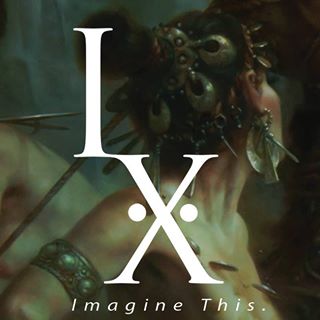
Illuxcon brought together some of the best artists in the larger genre of imaginative realism, and over a dozen current and former Magic illustrators were in attendance. It was my first trip there but certainly will not be my last. Although I was prepared if something large (or multiple things) caught my eye, I only made one purchase: Matt Stewart’s original sketch for the card Gilded Cerodon from Magic’s Hour of Devastation set.
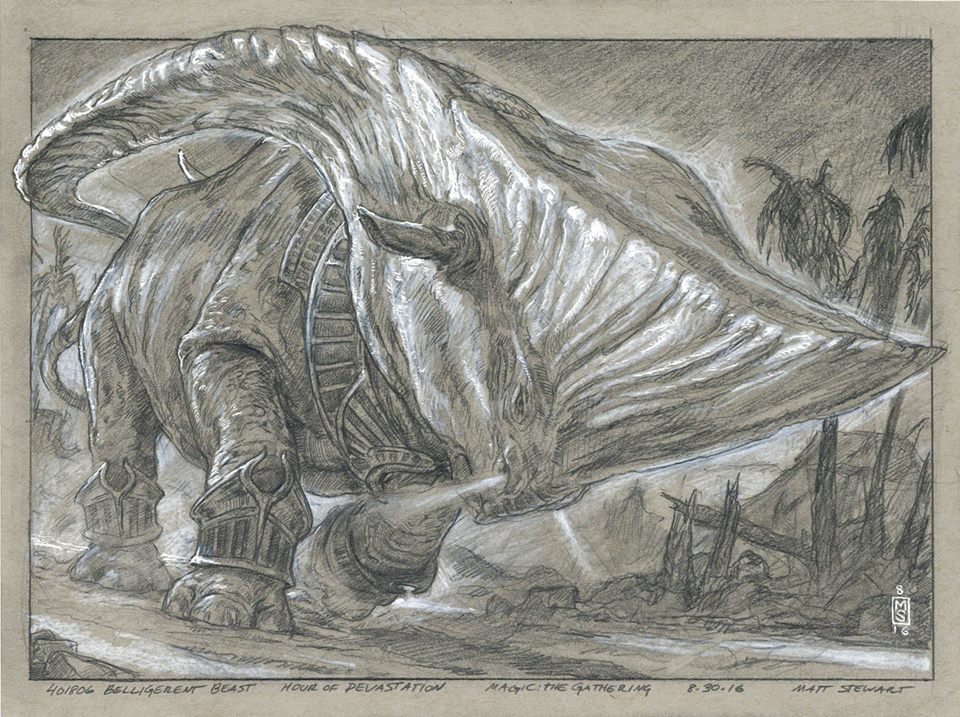
I had spoken to Matt several times before the show and had admired the piece since it was shown for the first time on his Facebook. But being torn between the finished traditional painting and the sketch, I decided to wait until Illuxcon when I could see them in person. This is the first sketch in my collection, and I couldn’t be happier that it is one of Matt’s exceptional pieces of pencil work.
The Artist: Matt Stewart
I’ll start off each of these articles by talking a bit about the artist.

Matt Stewart is nearing the 150-card art commission mark in terms of illustration for Magic (148 as of the writing of this article), with his first cards coming out during Future Sight in 2007. That’s ten years of Magic illustration! His body of work includes several other games and a plethora of beautiful pieces set in Middle Earth for various commercial and personal projects.
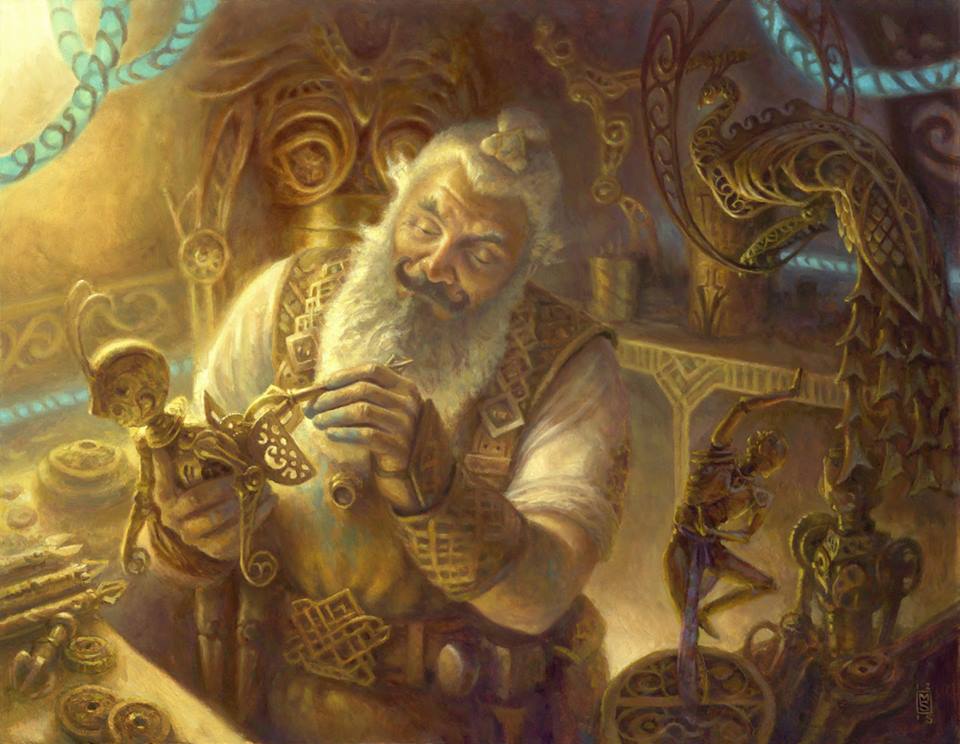
Master Trinkeeter, Kaladesh, Oil on Hardboard, 14” x 18” (Original Sold)
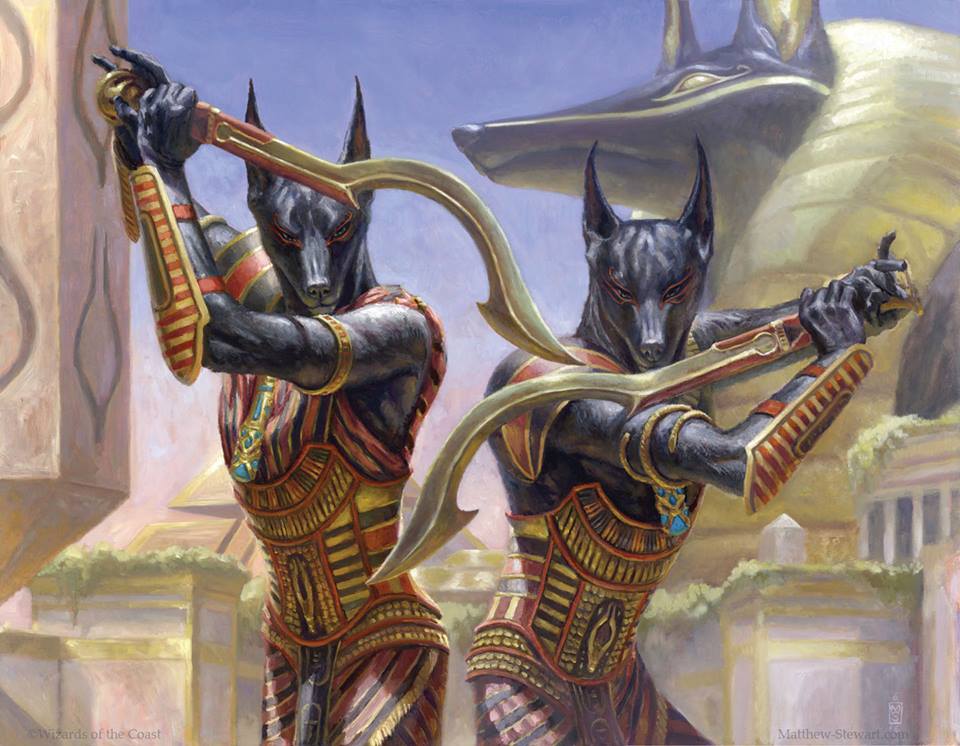
Trueheart Twins, Amonkhet. Oil on Hardboard, 14” x 18” (Original Sold)
He can be found in several Spectrum annuals, and most recently in Infected by Art 6 for the Magic card Trueheart Twins. Matt also has one Chesley award nomination for the Magic card Master Trinketeer and two other Chesley award wins in non-Magic categories.
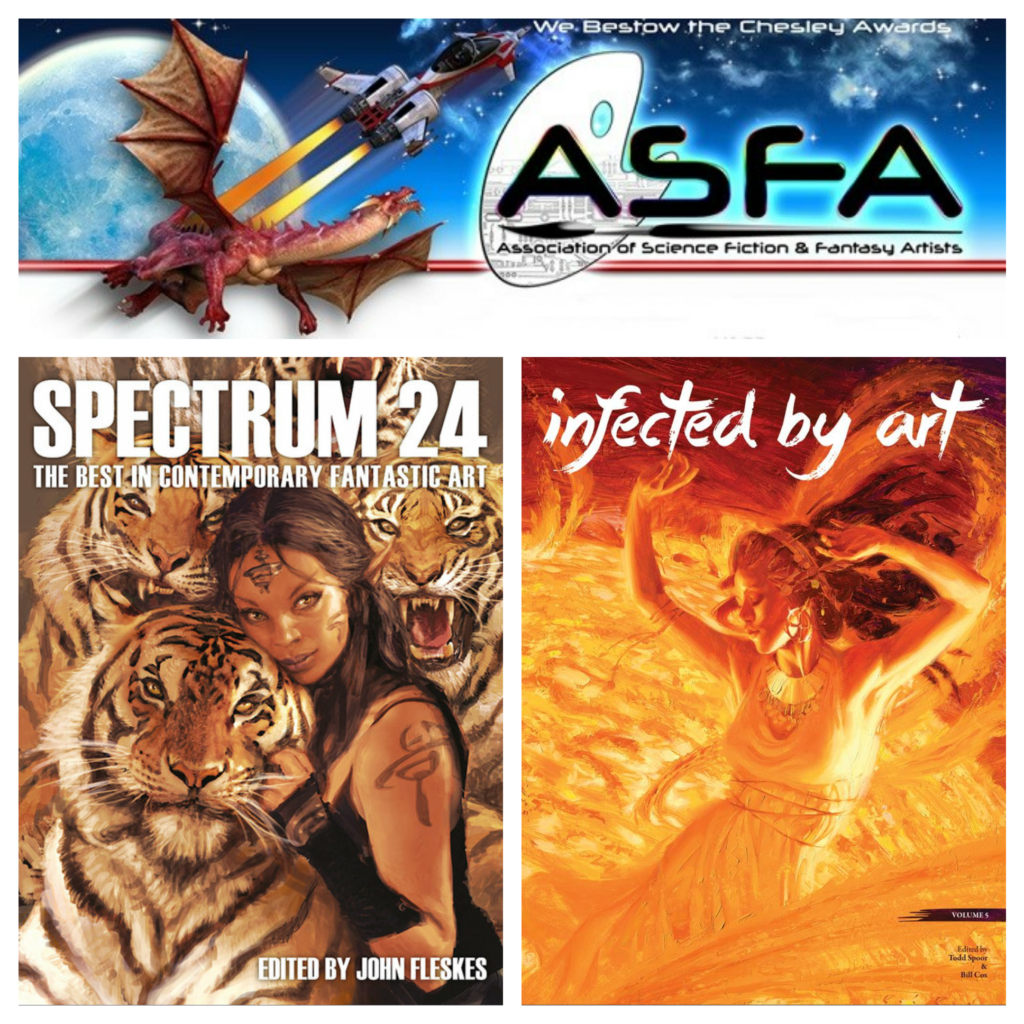
Spectrum and Infected by Art are artist-submitted and juried volumes of contemporary art published each year, featuring the best of the best. The Chesley Awards, presented by the Association of Science Fiction and Fantasy Artists, or ASFA, recognize exceptional work within a given year and are a crowning achievement for an artist. Magic artists used to never be nominated, but each year more and more works are not only being recognized but are winning the best in their category. Just this year ten Magic illustrations were included in Infected by Art 6. To see them all check out this article by Vorthos Mike Linnemann, who writes often on Magic’s growing presence in these arenas. These are a big deal, and are huge stepping stones for an artist’s career.
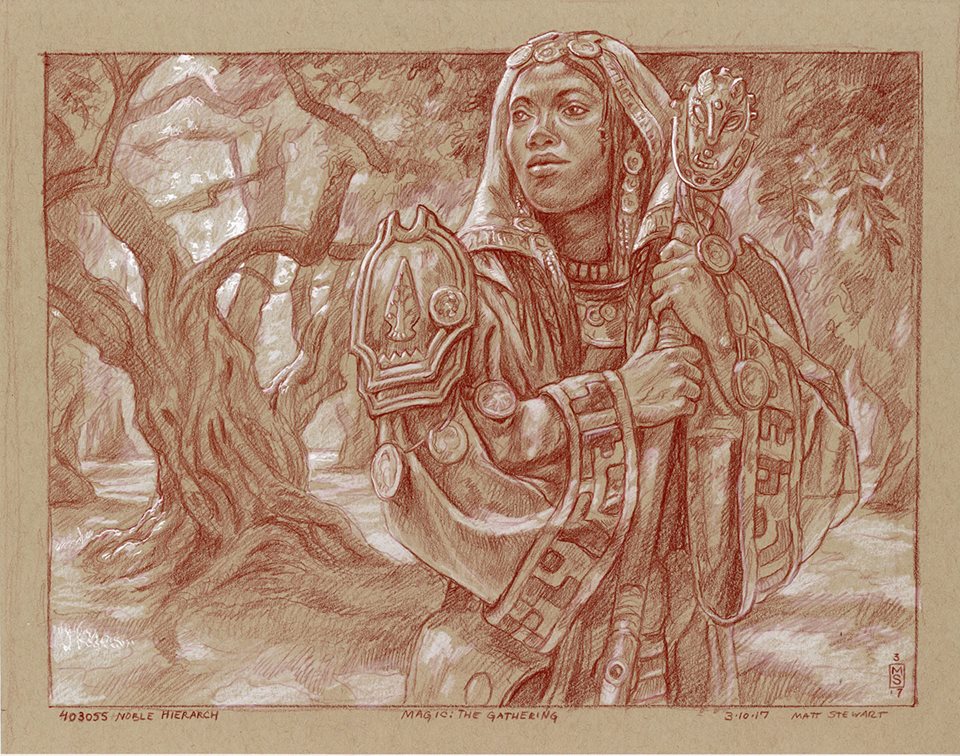
Noble Hierarch (Sketch), RPTQ Promo, Red watercolor pencil, white ink, and white chalk, on tan paper, 9” x 11.75” (Original Sold)
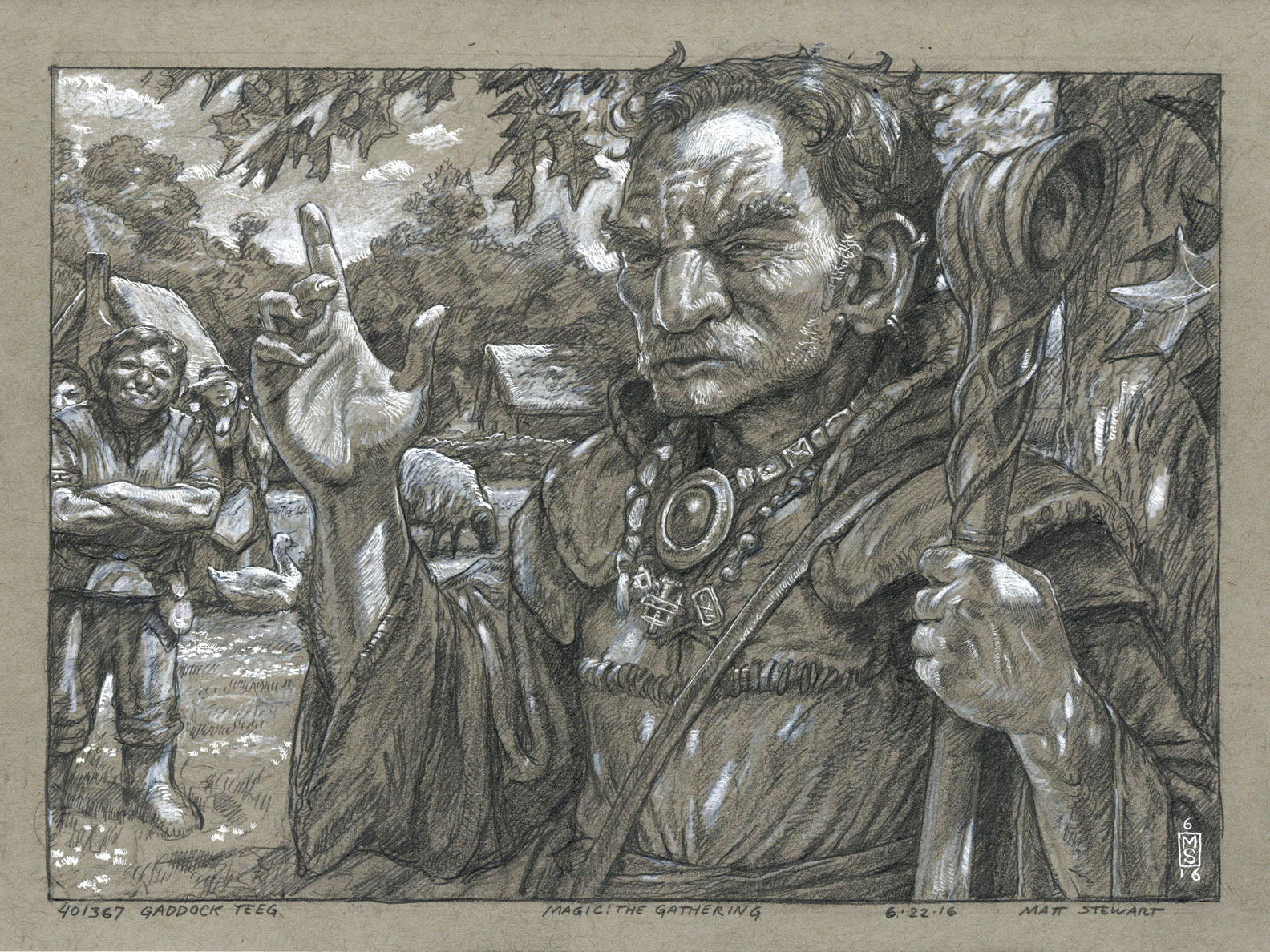
Gaddock Teeg (Sketch), Judge Promo, Graphite, white chalk, and white ink, on toned gray paper, 9” x 12” (Original Sold)
His pencil work is some of the best in the business, and the original art community’s collecting interests reflect as such. Although rare, some of his sketches will even achieve or pass the price point of other of his completed traditional works.
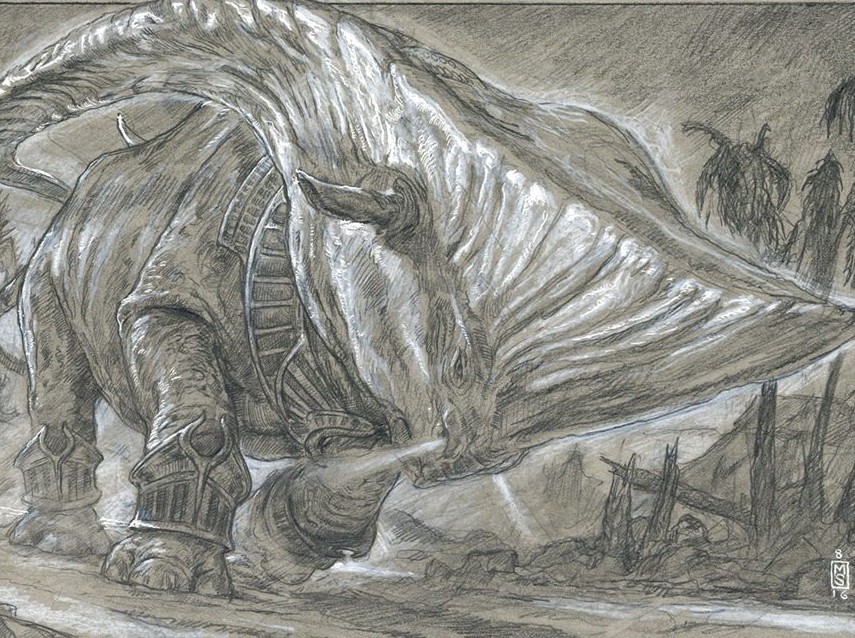
As you can see, Matt works in combinations of sketch mediums, including black graphite pencil, red watercolor pencil, white ink and white chalk, on either white or gray toned paper. The combination of graphite, white ink and white chalk on gray paper really makes Gilded Cerodon a stand out, and in my opinion in the league with some of his best Magic sketches. The highlights of white, especially on the cerodon horns, coupled with the protrusion beyond the border, really allow the viewer to believe the cerodon is about to come crashing through the piece. Let’s have a closer look.
Creature Feature: What is a Cerodon?
Cerodons have only appeared on Alara and Amonkhet. So far the multiverse has revealed four cerodons, at least by name. On Alara, the Bull Cerodon and its diminutive likeness Cerodon Yearling have large, bulky bodies and an assemblage of five horns culminating in a bony, ridged spine down their back.
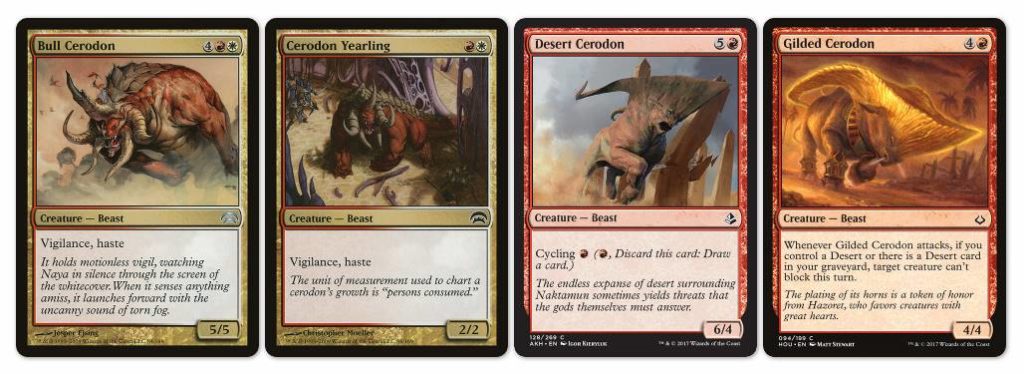
Though on Amonkhet, Cerodons have a single, plow like appendage that looks almost like a two pronged jester’s cap, extending forward and then protruding backwards the entire length of their body. We see this physical trait on Amonkhet’s Desert Cerodon and then repeated on Stewart’s Gilded Cerodon in the subsequent set. I was able to obtain the original art brief for Gilded Cerodon from Matt:
“A large beast, about the size of an elephant, aggressively posturing, with steam coming out of its nostrils and stamping the ground. It has gold adornments emblazoned with the Bolas motif, and its horns are coated with gold, which shimmers with a hint of magic.”
There was also a rough image of a “beast with horns” provided in the set style guide that Matt was told to use as a starting point. Most style guide material cannot be shared as it remains under the artist’s non-disclosure agreement even after their artwork is released. Style guides contain lots of information that a player sees once a set is released, but also much that is never meant for public eye, from concept art (like the beast with horns) to the details that ensure environment cohesiveness. What we do know is the consistency seen between these two Amonkhet Cerodons was intentional, and we can sort of imagine what the beasts may have looked like in the early concept stages.
With cerodons only appearing on Alara and Amonkhet, and filling a very minor role in the greater animal kingdom of these two planes, not much has been published outside of the style guides I mentioned earlier. The only public description of these beasts that I could find was from The Art of Magic the Gathering: Amonkhet book as seen here:
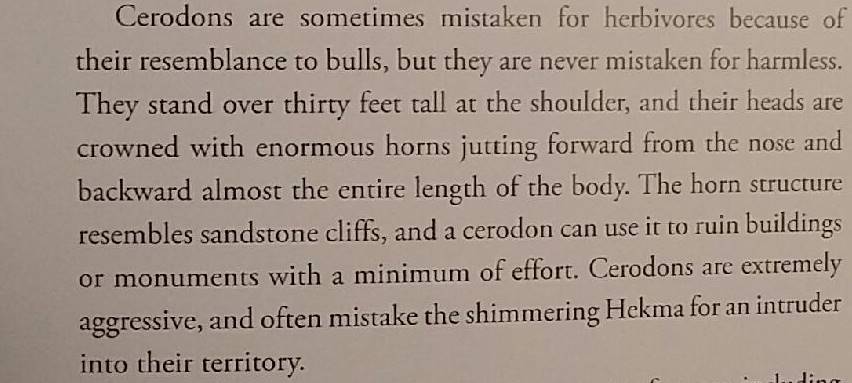
The Art of Magic: the Gathering- Amonkhet by James Wyatt, 2017, p. 229
Here we learn they are probably omnivorous, over 30 feet tall at the shoulder (see the art brief of assuming the size of an elephant), and not surprisingly based on the depictions seen above, extremely aggressive. Will we see cerodons show up on another plane? I hope so.
Where in the World are We?
One of the things I look for in the art I collect is that they are noticeably from “somewhere” or a part of “something.” It could be obvious or more subliminal, but in either case should be unmistakable. Artists are usually given some context of when and where the scene needs to take place, but the specificity doesn’t always translate to the player viewing the art within the reduced size of the card frame. Looking at my first two pieces, Izzet Cluestone is unmistakably of Ravnica, and even Crush of Wurms is absolutely from Dominaria, especially if you know your wurm biology.
Gilded Cerodon is no different, and the artist has added several clues that let you know this big guy is absolutely from Amonkhet, and more specifically in the time up to or during the Hour of Devastation. Some of these characteristics are more difficult to discern from the monochrome pencil sketch, but they are evident nonetheless.
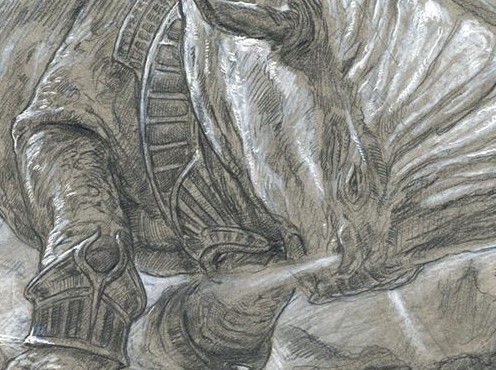
If we look at how the Cerodon is adorned, the Egyptian connections are very distinct. He wears a collar very much akin to the traditional Egyptian ‘wesekh’ necklace, thick with gold to match his horned appendage. His oversized cuffs/anklets match this collar in style and bear the repeated signature “Bolas” horns seen all across Amonkhet (and required in the original art brief).
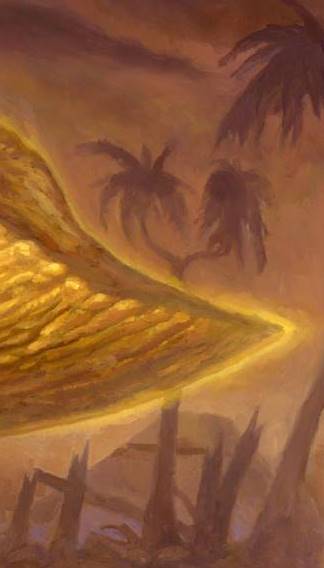
Let’s jump full color for a second to add one more piece of the puzzle. Scanning the background, it’s overwhelmingly red. Gilded Cerodon is a red card, yes, but this is much more than just finding fitment in the color pie—something is happening here. The area to the right of the beast has ravaged palm trees, with several split, cracked and fallen, and the sky is a red hued storm of hellfire in the distance. We know he is on Amonkhet and the very sight of this landscape lets the viewer know it is the Hour of Devastation.
So Why This Piece?
If we look at my Five Things to Consider, here’s where we stack up:
1. Do You Love it?
Since the day Matt Stewart showed the work when the card was spoiled, I loved this sketch—even not being a “sketch” guy. After five months I still thought about it, and seeing it in person confirmed everything I had thought previously. That meant yes.
2. The Work
The composition and contrast of Matt’s sketches make them very attractive. From the moment I first saw it, it grabbed my attention, regardless of the card or anything else. If you are interested in sketches, he should be near the top of your short list. It’s also a big creature. I love beasts and monsters of all corners of fantasy, myth, and magic, so this beastie is right up my alley.
3. The Artist
From Chesley awards to near constant card art commissions, Matt’s ten year career of Magic illustration ranks him as one of the best to ever illustrate the game. Stewart is accomplished, still creating at a super high level, and one heck of a nice guy on top of it all.
4. The Card
The card is not great. I’ve played Limited with it and it will probably not ever see play outside of Amonkhet block, unless Deserts become important again. In almost all cases, while I pay attention to the power of the card, this doesn’t rank above the work itself.
5. The Environment
Amonkhet was Magic’s first deep dive into this sort of Egyptian-inspired world, and like we talked about earlier you can see motifs throughout this work that show this relationship. It’s the only thing from Amonkhet I have, and it’s important to me that it’s so representative of its setting. It is a great fit to add a piece of Amonkhet to my collection.
In this case, the card itself being mostly unplayed means the play environment is just not a factor. At least not yet.
To summarize: an outstanding artist that works magnificently in the medium, a setting that is a known time and place in the multiverse, and a subject that interests me makes this sketch a near perfect fit for my collection. So now what?
Put It On The Wall!
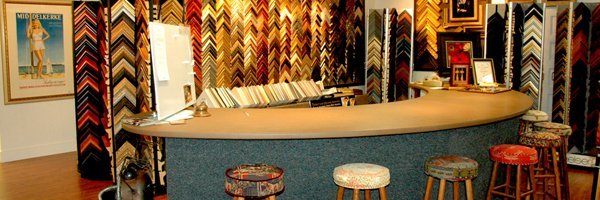
Ain’t That a Frame, Westminster, Maryland
Custom framing is not cheap; and a good framer is an art collector’s best friend, plain and simple. I am extremely fortunate to have a wonderful frame shop not far from my house. They are a local small business that has been open for more than 30 years, and they came highly recommended and for good reason. Every trip we fill the counter with possibilities, try all sorts of combinations, and usually find what seems to be the perfect fit. This piece was a bit different, but in all the right ways. If you’re in the Baltimore, MD area, it’s worth the drive to Westminster to check out Ain’t That a Frame.
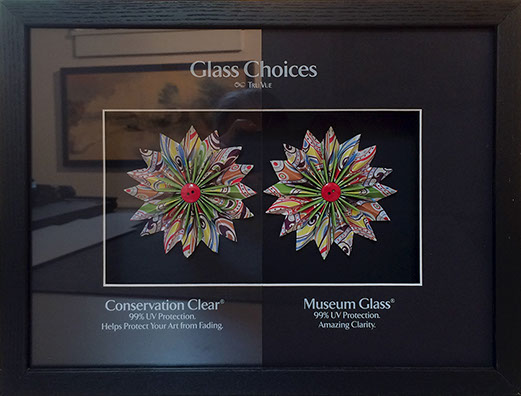
Even though I purchased this sketch back in October, it never made its way to the frame shop until late January. There are a bunch of things to consider once you’ve decided to get things framed, and some are easier than others. First thing first: museum glass. When it comes to Magic art that requires glass, meaning pencil sketches, acrylics, and really anything but oils, pay the extra little bit for museum glass. I cannot stress this enough. Ask your framer to see the difference (they’ll have the same thing as in the picture), and it’s a no brainer after that.
Beyond the glass, I knew I wanted something monochromatic to match the sketch, and that I prefer thicker frames over thin. The sketch was already in a complementary (and complimentary) matte that was supplied by the artist, and I didn’t see any reason to change this unless for some reason I couldn’t find a frame to suit. I also like, if possible, to have the outside frame mimic something in the work and you’ll see this in most every piece in my collection. In this case, the best thing to pull from was the texture of the giant horns.
From there, I let my framer go to work and pull several suggestions. Usually I’ll take some photos of all the different options we looked at, but for this story I’ll just show you the final choices and how we got there.
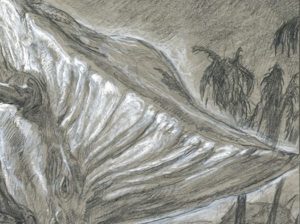
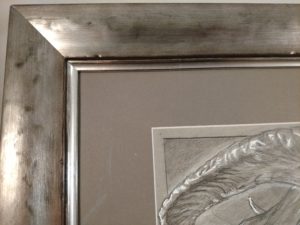
For the first time, the first frame option that was pulled was the final choice. We tried about a half dozen others but none looked as good as the first. A nice thick outer frame, it was covered in a metal veneer that texturally matched the look of the cerodon horns but also, because of the reflection of the metal in the light, picked up on the white highlights used by the artist. And it matched my current matte. While it was more expensive than I intended for this piece, the match was so perfect I had no interest in searching further.
With the frame and matte chosen, we could have been done. But just like Mr. Ollivander in The Sorcerer’s Stone, a quiet “I wonder” followed by a return around the counter produced several silvered fillets to use as an interior frame. The first was a 5/16 inch beveled fillet with hand-leafed silver. It was beautiful and matched the ensemble very well, but hand-leafed silver and the price that goes with it is not something I felt like this piece needed. Thankfully we found almost an identical option that was a bit more cost effective, and the Gilded Cerodon was finished.
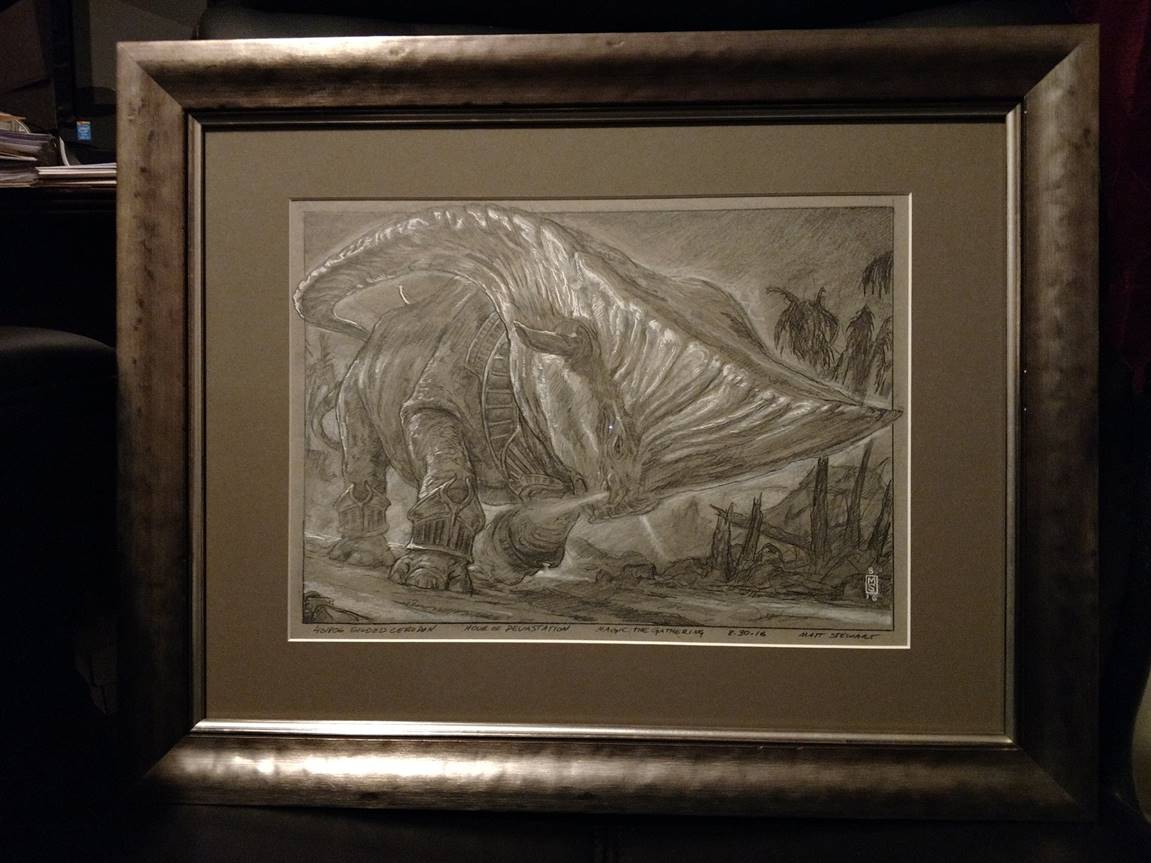
Framing can be a funny thing. Much of it has to do with personal taste, because after all whoever’s wall it is hanging on is the one who has to live with it and enjoy the piece. As with my other pieces, we were able to create a frame that became an extension of the art. You don’t see the sketch in a matte in a frame; you see the work as a whole. Both of my goals were achieved: the frame imitates an aspect of the work, and the style is an extension of the medium. It’s not on the wall just yet, though. Once I catch up on the rest of my framing over the next few months I’ll be hanging a bunch together.
Build Your Collection
Matt Stewart still has a TON of excellent Magic original sketches and finished traditional paintings available for purchase. His sketches generally range from $200-$350 and his originals from $500-$4000, with standout pieces commanding even more. His Magic art is a great starting point for both a collector looking for their first piece and a seasoned hobbyist expanding their collection. For more info, you can visit Matt’s site.
Here are a few available highlights to check out if you’re interested in adding a Matt Stewart original to your collection:
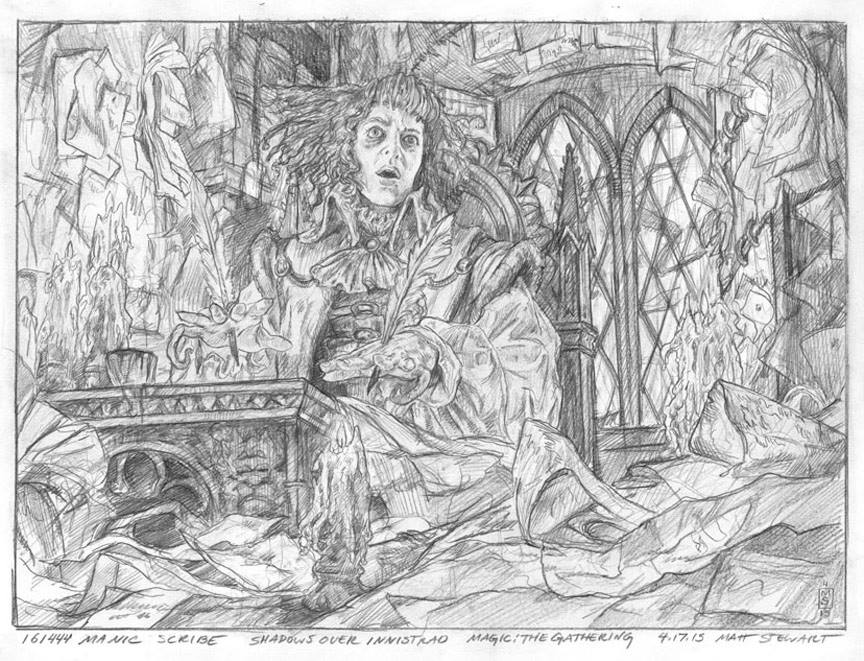
Manic Scribe, graphite on Paper, 7 ¼” x 10” $225
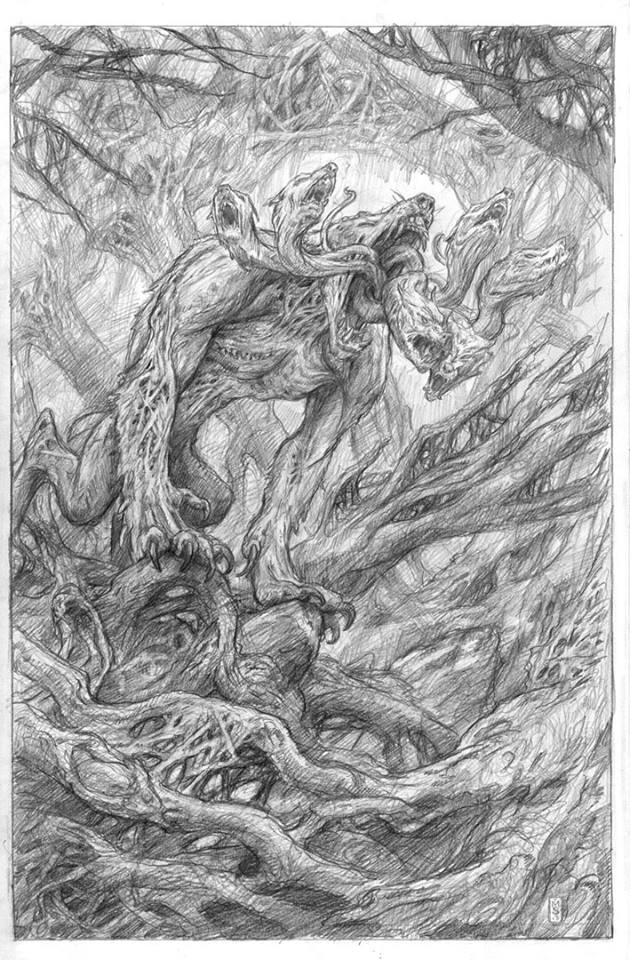
Howling Chorus, graphite on paper, 11″ x 17″ $350
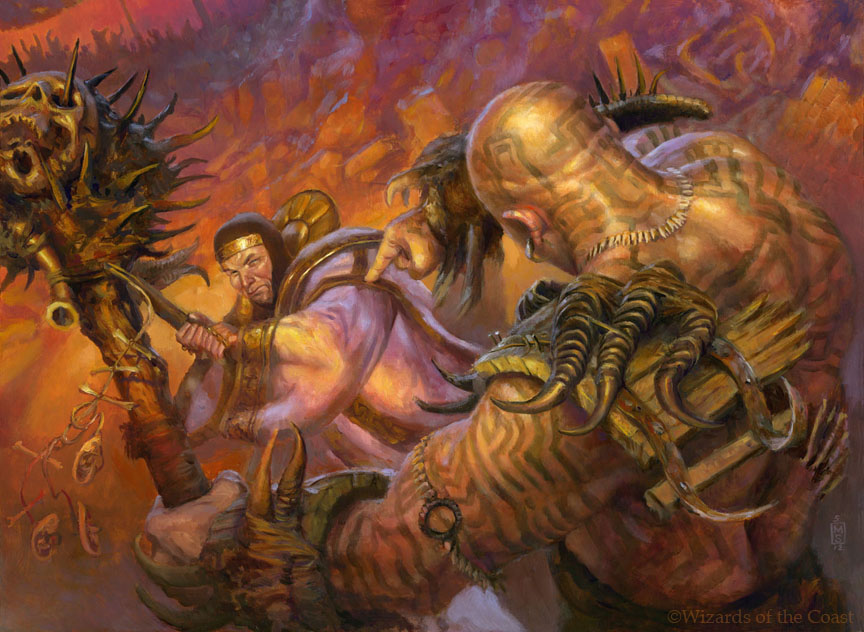
Pit Fight, oil on paper on board, 12″ x 16″ $500
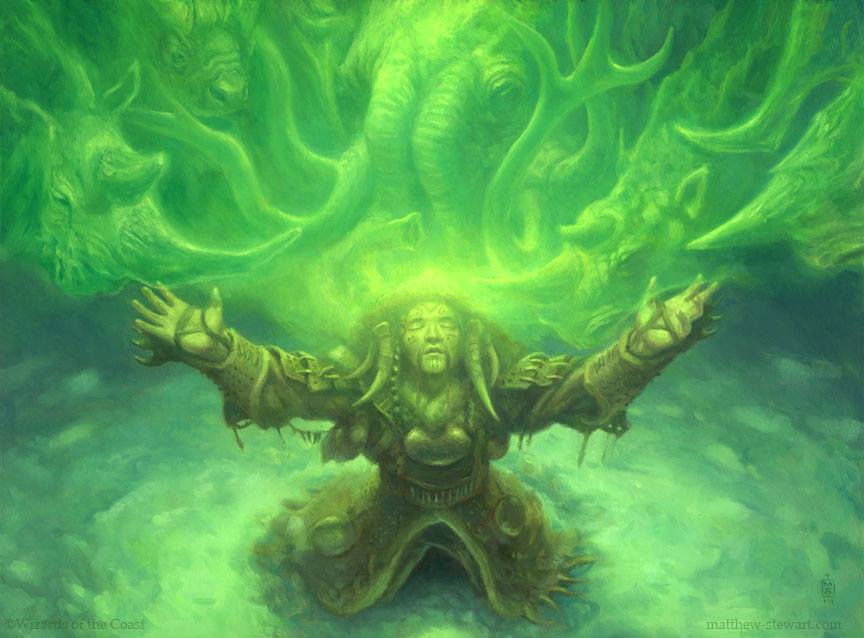
Shamanic Revelation, oil on paper on mdf, 12″ x 16″ $1750
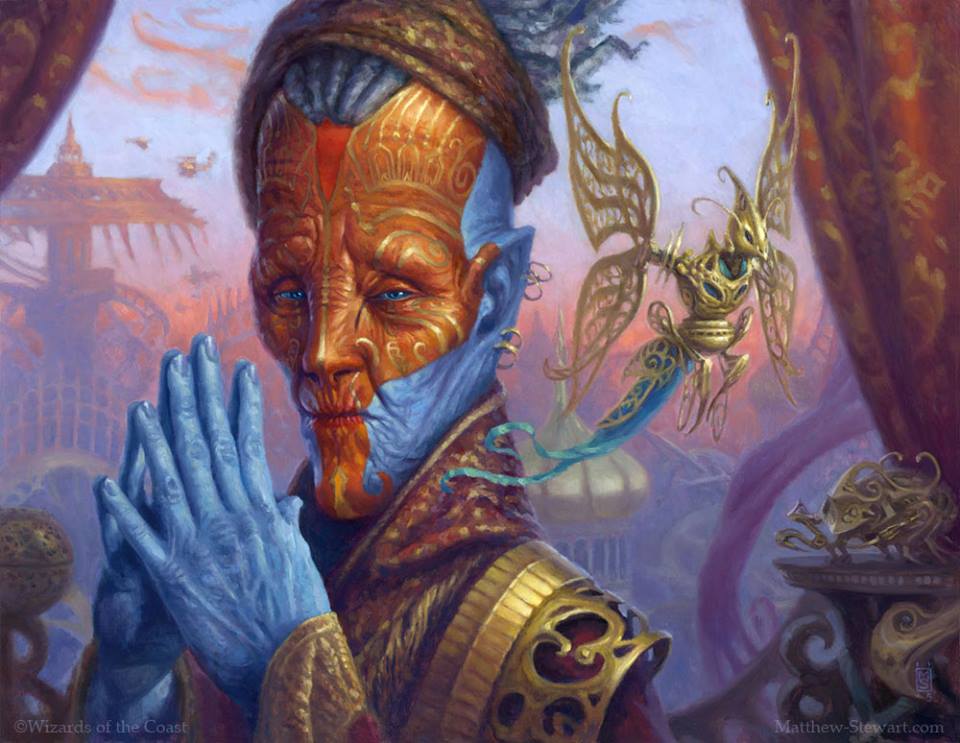
Padeem, Consul of Innovations, oil on hardboard, 14″ x 18″ $4000
Please note that I am not an agent for the artist and I receive no compensation for the inclusion of these pieces. This section is simply to promote their work and encourage others to enjoy it as I have.
Wrapping Up
I hope you enjoyed a closer look at Matt Stewart’s Gilded Cerodon, and maybe you even saw something you may not have noticed before. Next time we will be taking a step all the way back to the first piece I purchased, the one that really started it all, and exploring it in the same ways we looked at this work.
As always, to see original #mtgart and other #vorthos related things, follow me on Twitter. Feel free to ask questions or retweet to continue the conversation. Thanks and see you next time!
Donny Caltrider has been playing Magic since 2002 and collecting original Magic art since 2017. He has an M.A. in Museum Studies from Johns Hopkins University and enjoys telling stories about art, objects, and the intersection of fantasy with real-life. You can find him on Twitter talking about #mtgart, museums, and other #vorthos related goodness. Follow along and continue the conversation!

